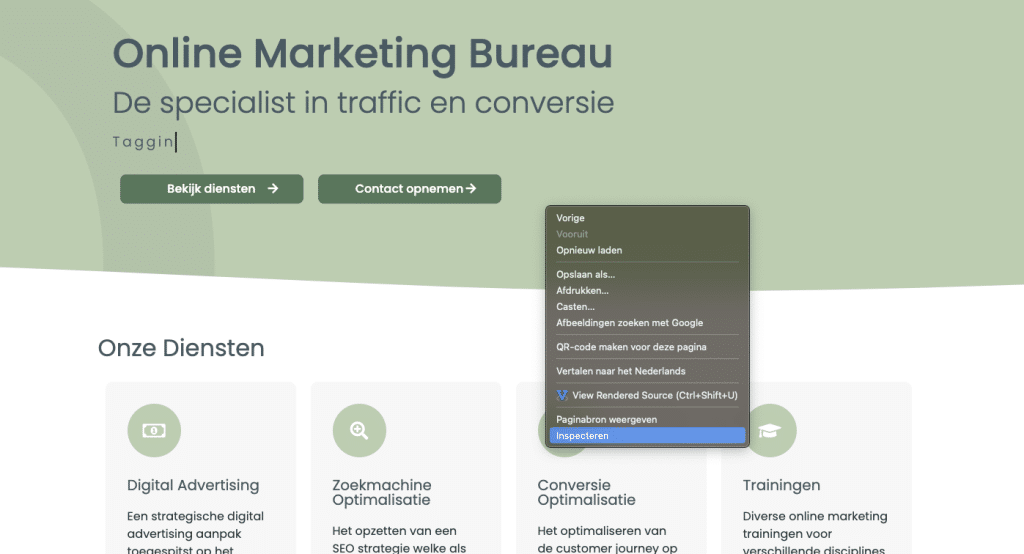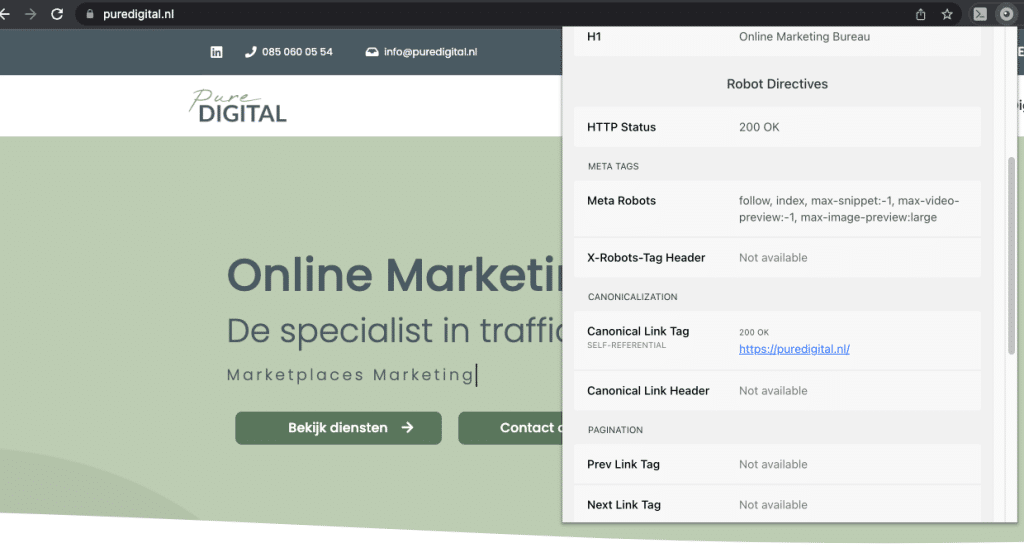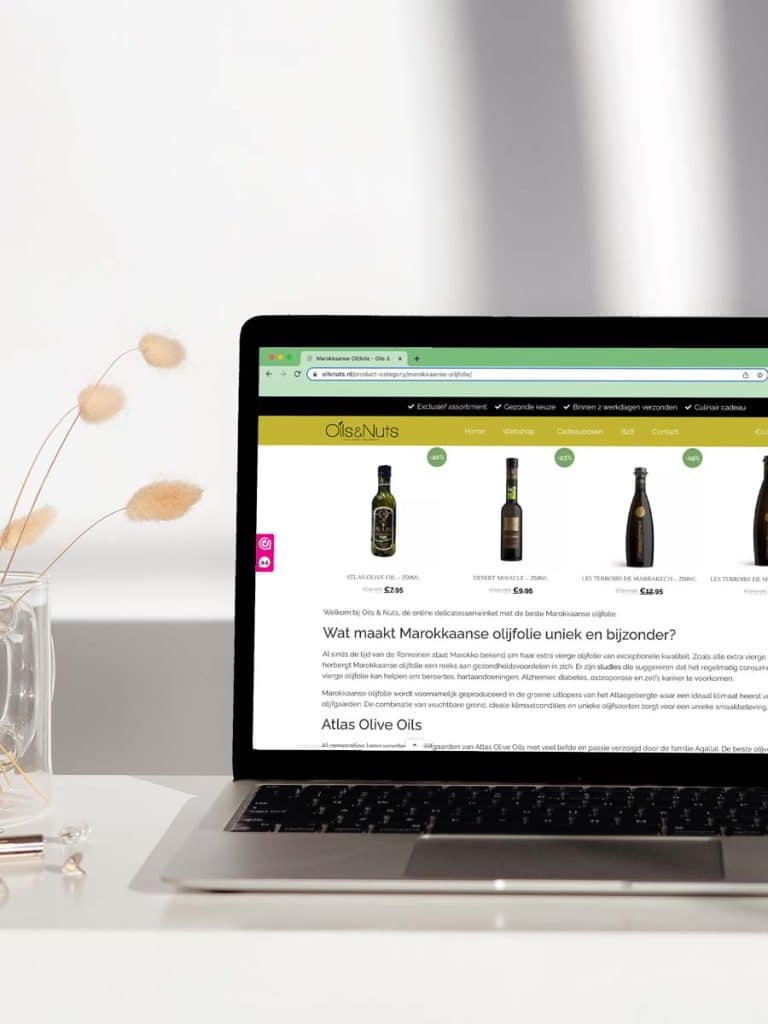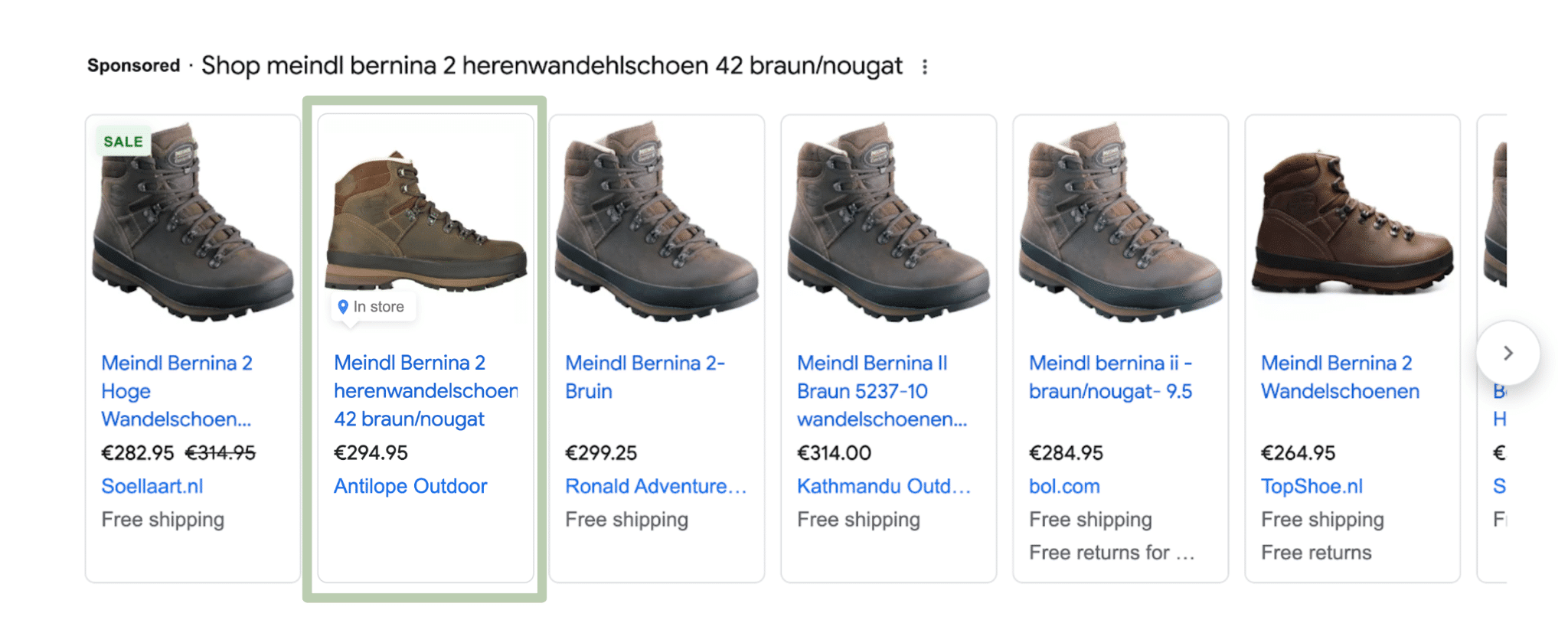What Is A Canonical?
A canonical tag is an HTML tag that can be placed on a Web site to give search engines such as Google a hint as to which version of the Web page may be indexed. The purpose for SEO of a canonical tag is to prevent duplicate content, pass on the (possible) link value to the SEO page and allow search engines to index the correct version of a page, which can lead to better SEO results. In this article we will further explain in what situations it can be used, a more detailed answer what the benefit is and how to check if the canonical is correct at all.
Source: Google
What Does a Canonical Look Like?
A canonical tag is implemented in the HTML source code within the <head> section of a Web page and has the following code: <link rel=”canonical” href=”URL”>.
This replaces the URL with the actual URL of the chosen version of the page. This URL must have the same domain and path as the page on which the canonical tag is placed.

When do you use a canonical tag?
A canonical tag is used when a Web site has multiple versions of the same content and it is important to let search engines know which version should be considered the preferred version.
Here are some situations where using a canonical tag may be relevant:

Duplication of content: When your website has identical or nearly identical pages with the same content but with different URLs, it is advisable to use a canonical tag. This may occur, for example, in page variants with sorting, filtering or pagination options.

Pages with multiple URLs: If a single page is accessible through multiple URLs, for example due to parameters, session IDs or tracking codes, adding a canonical tag can help indicate the desired version of the page.

Content under different categories: If the same content appears on multiple pages within different categories, a canonical tag can indicate which page should be considered the main version.

Multiple domains: In some cases, a company may have multiple domains containing the same or similar content. A canonical tag can help indicate the chosen version of the page and prevent search engines from considering the content duplicate.
What are the benefits of using a canonical on a duplicate page?
Using a canonical has many benefits for both SEO and UX. It ensures that multiple pages are accessible, yet 1 variant is designated as an SEO page.
Here are a few benefits of why a canonical can add value to your website:

Avoiding duplicate content: A canonical tag helps search engines understand which version of a page should be considered the main version. This avoids indexing and treating duplicate pages as separate entities with the same content. This reduces the risk of duplicate content, which is beneficial to a website’s SEO performance.

Concentrated value and ranking: With a canonical tag, the value and ranking of several duplicate pages are merged into one canonical page. As a result, the canonized page has a better chance of performing higher in search results because all relevant signals and links are directed to a single version of the page.

Improved user experience: Resolving duplication issues using canonical tags improves the user experience. Users are directed to the correct version of the page, so they are not confused by different URLs with the same content. This contributes to a consistent and user-friendly experience for website visitors.

More efficient use of crawl budget: Since search engines have a limited crawl budget, which is the amount of time and resources they spend on crawling a website, using canonical tags helps search engines work more efficiently. By giving a clear indication of which version of the page is the most important, search engines can use their crawl budget more effectively by focusing on the canonized page rather than crawling all the duplicate versions.
How can you check if the canonical is set correctly?
There are several ways to check how a canonical is set. But more importantly, you can assess whether the canonical is correct

How do you check if a canonical is present at all?
Option 1:

Open the web page and right-click. Then click inspect as below:


You should now see a bar with the website code. Now search with the short code: cmd + f (Apple) or ctrl + f (Windows) this will bring up a search bar:


You should now see a bar with the website code. Now search with the short code: cmd + f (Apple) or ctrl + f (Windows) this will bring up a search bar:

Option 2:
Download the SEO Peek plug-in after installation you can click on the eye on each page. After this, all important SEO values are displayed from a web page:

How do you check that the value is correct?
Now that we know how to find the canonical on the web page, the task now is to determine if this is the right canonical?
Some things you can check:

Is this an SEO page? If so, does the canonical refer to itself? On previously shown examples, you will see a canonical on the homepage that links to the homepage, or top!

When it is not an SEO page so for example, a filter page, it is important that the canonical refers to the SEO page. To give an example the URL https://puredigital.nl/filter/1 (when this is partly duplicate of the original) it is important to set the canonical to: https://puredigital.nl.

When using parameter URLs such as ?utm it is important that the canonical refers to the “clean” URL. Example: https://puredigital.nl?utm=1234 here the canonical should point to https://puredigital.nl
Are canonicals always respected?
Although search engines generally respect and follow canonical tags, there is no absolute guarantee that they will always be accepted. Search engines, such as Google, view the canonical tag as a suggestion, not a prescriptive instruction. They assess the relevance and consistency of the content on the pages before deciding which version is considered the most important.
It is important to ensure that the canonical tag is implemented correctly and that the canonical page is similar in content to the duplicate pages. In addition, URL structures, metadata and other relevant elements must be consistent.
It is also possible for search engines to factor in other signals and factors when determining the main version of a page, even if a canonical tag is implemented.
While canonical tags are generally effective, it is advisable to follow search engine guidelines and regularly check the indexing and ranking of your pages to ensure they are interpreted properly.

How can you check if Google respects the canonical?
In Google Search Console, you can find all the information about your website when a property has been created for this purpose. In the left column, click on the URL inspection. In this, enter the URL you want to check. Then you see the image below you click on the tab: Page indexing. Should Google choose to use a different canonical than the set canonical you will see this next to: Google selected canonical URL:

When this is the case, Google will apparently place a different value on the web page being examined.
Conclusion:
At PureDigital, we understand the importance of countering problems with duplicate content and optimizing a website’s SEO performance. Therefore, we use canonical tags to address these challenges.
Our experienced team of SEO specialists is familiar with the complexities that can arise when websites have multiple pages with similar content. This can happen when the same page can be accessed in different ways, such as when a product or blog falls under multiple categories or when separate URLs exist for different device types.
Google places a high value on showing users the highest quality results, which is why it is essential to avoid duplicate content. When no canonical tags are added to a page, Google makes its own decision about which page should be considered canonical. This can result in crawling the wrong page and filtering other pages as duplicate URLs.
With our expertise in optimizing SEO performance and managing duplicate content, we can make sure your website is sending the right signals to search engines. By using canonical tags, we help you improve organic visibility, avoid duplicate results and maximize the overall SEO impact of your website.
Questions about SEO Canonicals?
Then get in touch or download our SEO whitepaper!

